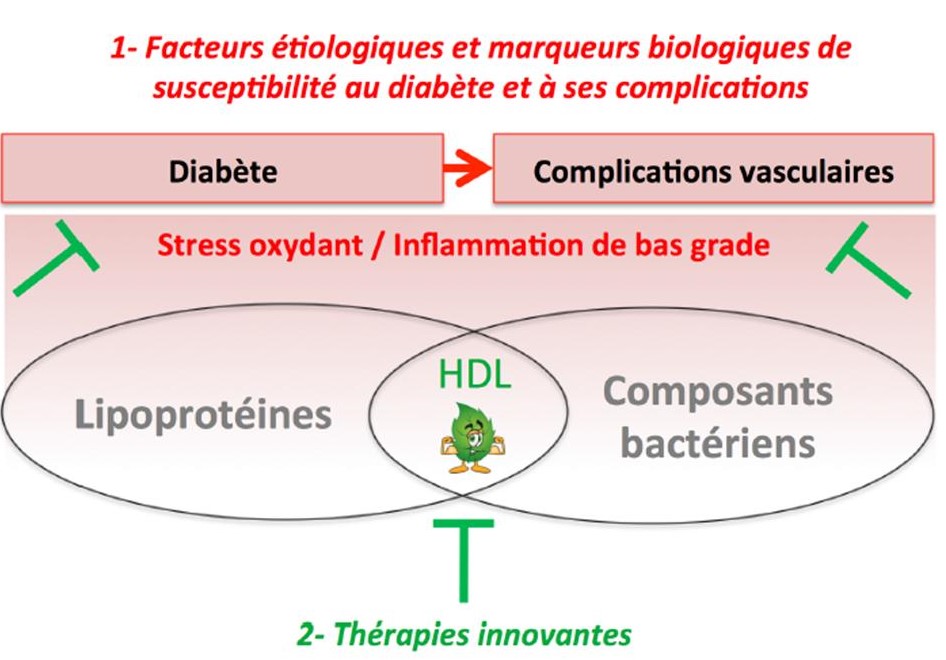DéTROI team focus on the study of the vascular complications associated with diabetes
Diabetes prevalence is 3-4 times higher in La Reunion than in France metropolis, it is one of the three priority axes in health on the island. The vascular complications as stroke represent a major public health concern (mortality X2 compared to France metropolis). In Reunion Island, most of the strokes result from atherothrombosis and more than half patients are diabetics. Whether it occurs on the blood-brain barrier (BBB) or on neovessels of atherosclerosis plaque, the endothelium is activated and is altered in diabetic patients. The main consequences are a weakened BBB in ischaemia condition (susceptibility in hemorrhagic complications) and neovessels giving intraplaques bleedings contributing to clinical complications (stroke and myocardial infarction). In addition, obesity is a important factor of co-morbidity in La Reunion and the adipose tissue represents a potential source of “pro-inflammatory” molecules which can activate and weaken the endothelium.
The main scientific objectives of DéTROI team focus on the study of the vascular complications of diabetes (in particular stroke) and the therapeutic intervention using protective molecules stemming from Réunion biodiversity – Indian Ocean Region (plants, fruits, seaweeds) further to a vectorization by lipoproteins (HDL mainly). We shall be interested particularly in the endothelium in acute and chronic hyperglycemia situation and also in an ischemic and/or inflammatory context.
We will try in particular to establish the links between diabetes, atherothrombosis and cerebral vascular disease in La Reunion and to discover relevant biomarkers of susceptibility to vascular complications in diabetic patients. In parallel, the mechanisms of endothelial dysfunction in acute or chronic hyperglycemia situation ± ischemic and/or ± inflammatory context will be deciphered and the development of imaging tools will allow to estimate the atheromatous plaque vulnerability and the cerebral ischaemia. Finally, we shall propose innovative therapies base on the protective molecules stemming from Réunion biodiversity – and their vectorization with HDL.
These objectives could be divided into four complementary thematic axes :


